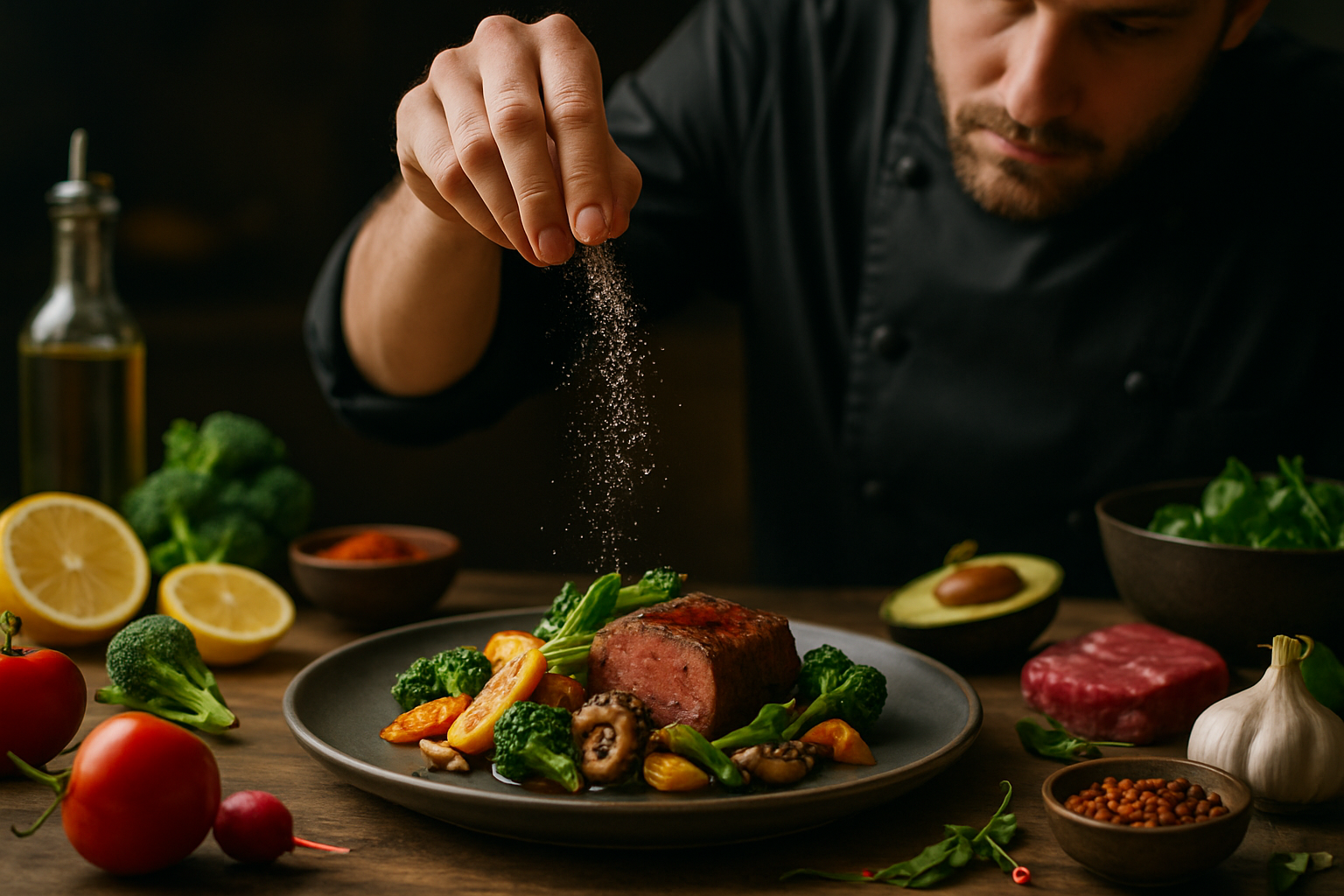Culinary Alchemy: Transforming Humble Ingredients into Gourmet Delights
Unlock the secrets of culinary alchemy and elevate everyday ingredients to gourmet status. This art of transformation turns simple staples into extraordinary dishes, proving that luxury lies not in rare components, but in creative techniques and bold flavor combinations. Join us on a journey of gastronomic innovation that will revolutionize your approach to cooking.

Texture Transformation Techniques
The alchemy of texture is a powerful tool in elevating humble ingredients. By manipulating the physical structure of foods, you can create entirely new eating experiences. Consider the humble potato: when mashed, it becomes a creamy comfort food; when twice-cooked, it transforms into a crispy, golden delight. Experiment with contrasting textures in a single dish to create interest and depth. Try pairing crispy fried shallots with silky smooth purées, or contrast tender braised meats with crunchy vegetable slaw. Advanced techniques like spherification can turn liquids into caviar-like pearls, while freeze-drying can create intense flavor bombs with unique textures. By paying attention to texture, you can turn even the most basic ingredients into exciting, gourmet-level creations that engage all the senses.
The Art of Unexpected Pairings
Culinary alchemy often involves combining ingredients in surprising ways to create new and exciting flavor profiles. This art of unexpected pairings can transform familiar ingredients into something entirely novel. Consider classic combinations like strawberries and balsamic vinegar, or watermelon and feta cheese. These pairings work because they balance contrasting flavors and textures. To create your own unexpected combinations, start by thinking about the basic taste categories: sweet, salty, sour, bitter, and umami. Try pairing ingredients from different categories, like a sweet fruit with a savory cheese, or a bitter green with a rich, umami-packed sauce. Don’t be afraid to cross cultural boundaries in your experimentation. A dash of miso in a Western-style stew, or a sprinkle of za’atar on roasted vegetables can add an intriguing twist to familiar dishes.
Maximizing Ingredient Potential
True culinary alchemy involves using every part of an ingredient to its fullest potential. This nose-to-tail (or root-to-stem) approach not only reduces waste but also unlocks new flavors and textures. Take the humble carrot: its sweet, crunchy root can be roasted, puréed, or juiced; its feathery greens can be turned into pesto or used as a garnish; even its peelings can be fried into crispy chips or simmered to enrich stocks. Apply this thinking to other ingredients: use citrus zest and juice in different components of a dish; transform herb stems into flavored oils; or use vegetable trimmings to create rich, flavorful broths. By maximizing the potential of each ingredient, you not only create more complex and interesting dishes but also practice sustainable cooking that honors the whole food.
Elevating Presentation for Visual Appeal
The final step in culinary alchemy is transforming the visual presentation of a dish. Even the most humble ingredients can be elevated to gourmet status with thoughtful plating. Start by considering color: a monochromatic palette can be striking, or you can create visual interest with complementary colors. Play with height and texture on the plate, using techniques like stacking or creating swirls and smears with sauces. Negative space is also important; sometimes less is more when it comes to elegant plating. Don’t forget about the serving vessel itself – an unexpected or artisanal plate or bowl can elevate the entire dining experience. Remember, we eat with our eyes first, so taking the time to create a visually appealing presentation can transform a simple meal into a memorable culinary experience.
Culinary Alchemy Tips & Facts
• Use umami-rich ingredients like miso, nutritional yeast, or dried mushrooms to add depth to vegetarian dishes.
• Transform tough cuts of meat into tender delicacies through slow cooking methods like braising or sous vide.
• Experiment with molecular gastronomy techniques like foams and gels to add unexpected textures to familiar foods.
• Infuse oils and vinegars with herbs, spices, or aromatics to create instant flavor enhancers.
• Learn the art of pickling to transform vegetables and extend their shelf life while creating complex flavors.
• Master the technique of caramelization to bring out the natural sweetness in vegetables and create rich, complex flavors.
In conclusion, culinary alchemy is about more than just cooking – it’s about transformation, creativity, and pushing the boundaries of what’s possible in the kitchen. By mastering these techniques of flavor layering, texture manipulation, unexpected pairings, ingredient maximization, and artistic presentation, you can turn even the most humble ingredients into gourmet masterpieces. Remember, true culinary magic lies not in expensive or exotic ingredients, but in the skill and imagination of the cook. So embrace your inner alchemist, experiment fearlessly, and watch as ordinary ingredients transform into extraordinary culinary gold under your hands.





